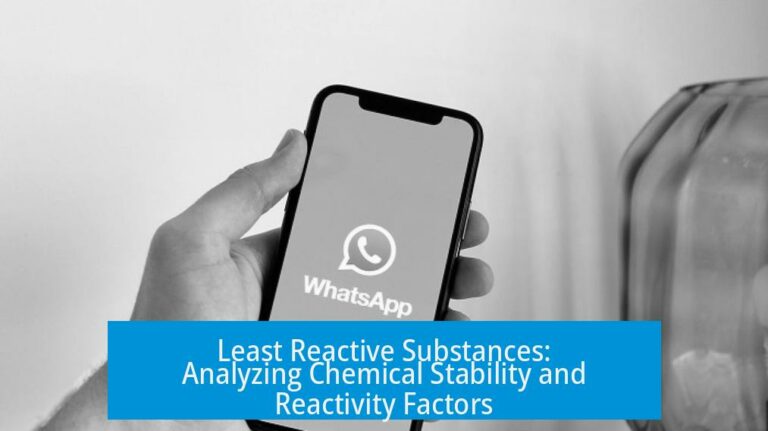Understanding Why pKa Values Differ Between -CH3 and -EtO Substituted Structures

Structures with a -CH3 group have a lower pKa value compared to those with an -EtO group due to differences in electron donating effects and the resulting stability of their conjugate base anions. This difference mainly arises from how the ethoxy (-EtO) group impacts electron distribution near the acidic site.
Electron Donating Effects of the -EtO Group
- The ethoxy group exhibits a +M (mesomeric) effect, donating electron density through resonance.
- This electron donation reduces the electrophilicity of the adjacent carbonyl carbon.
- As a result, the partial positive charge on the alpha carbon next to the acidic hydrogen is lowered.
The lower positive character on the alpha carbon makes the alpha hydrogen less acidic. A less electrophilic carbon discourages the loss of this proton, increasing the pKa.
Comparison to -CH3 Substituted Structures
- The methyl (-CH3) group is a weaker electron donor and primarily exerts an inductive effect.
- It does not significantly lower the electrophilicity of the carbonyl or reduce the partial positive charge on the alpha carbon.
- This maintains a relatively higher positive charge on the alpha carbon, enhancing acidity and lowering the pKa.
Conjugate Base Stability and Resonance Interactions

The acidity of alpha hydrogens also relates directly to the stability of their conjugate base anion forms. Resonance stabilization plays a key role:
- For compounds with -CH3, the conjugate base anion can efficiently resonate with the carbonyl, stabilizing negative charge.
- In contrast, the -EtO group participates in resonance with the carbonyl, interfering with anion resonance.
- This resonance competition reduces conjugate base stability in -EtO structures.
- Reduced anion stabilization leads to a harder-to-form conjugate base and higher pKa value.
Summary Table: Impact on pKa
| Substituent | Electron Effect | Effect on Electrophilicity | Conjugate Base Stability | Resulting pKa |
|---|---|---|---|---|
| -CH3 | Weak +I (inductive) | Higher electrophilicity on alpha carbon | Good resonance stabilization of anion | Lower (more acidic) |
| -EtO | Strong +M (mesomeric) | Lower electrophilicity on alpha carbon | Reduced resonance with anion | Higher (less acidic) |
Key Takeaways
- The ethoxy (-EtO) group donates electrons through resonance, lowering alpha carbon electrophilicity.
- This electron donation reduces partial positive charge, decreasing acidity and raising pKa.
- -EtO interferes with resonance stabilization of the conjugate base anion, further increasing pKa.
- Methyl (-CH3) groups lack this resonance donation, allowing stronger electrophilicity and better anion stabilization.
- The combined effects make -CH3 substituted structures more acidic (lower pKa) than those with -EtO.
Guys, Why Are the pKa Values of Structures with -CH3 Lower Than Those with -EtO?

The fundamental reason is that structures with -CH3 have lower pKa values because the ethoxy (-EtO) group donates electrons through resonance, reducing the acidity of the alpha hydrogen by making the conjugate base less stable. Let’s unpack why this happens. Spoiler: It’s all about electron effects and how the conjugate base feels about its “new home.”
When you compare a -CH3 group with an -EtO group attached to an acidic site, the difference in acidity stems from how these groups interact with the molecule’s electrons. The pKa value tells you how easily an acid loses a proton (H+). A **lower pKa means stronger acid**, and vice versa.
1. The Electron Donating Messengers: What’s Up with the Ethoxy Group?
First things first — why does the -EtO group act differently than a methyl (-CH3) group? It’s all about the electron donating power, specifically through what chemists call the mesomeric effect (also known as resonance effect).
- The ethoxy group (-OEt) has a lone pair of electrons on oxygen. This oxygen can “share” electrons with the adjacent carbonyl group.
- This +M effect floods electrons towards the carbonyl carbon, making it less electrophilic—less likely to pull electrons away from the alpha hydrogen.
- So, with -EtO, the carbon next to the acidic hydrogen is less positively charged.
Check it: more electron density equals less partial positive charge. This means the alpha hydrogen is *less* acidic because its attached carbon is less eager to stabilize a negative charge after losing that proton.
2. The Methyl Group’s Electron Push: Less is More?
The -CH3 group is not a big player in resonance but it provides a small inductive electron donation. This donation is weaker than the resonance donation of the ethoxy group.
Because -CH3 pulls electrons away less effectively, the alpha carbon retains a higher partial positive charge.
Higher positive charge on the carbon means the alpha hydrogen becomes easier to remove. So the structure with -CH3 has a lower pKa and higher acidity.
3. Stabilizing the Conjugate Base: The Key to Acidity

If you want to understand acidity, you need to look at what happens after the acid loses its proton — the conjugate base. The story isn’t over when the proton leaves.
- The conjugate base’s stability determines how “happy” that state is.
- More stable conjugate base → easier proton loss → stronger acid → lower pKa.
- This is why resonance is a big deal: it spreads out negative charge and lowers energy.
So, why does the ethoxy group reduce the conjugate base’s stability?
Because the ethoxy group also has resonance with the carbonyl, it “competes” for the resonance interaction.
This “competition” actually limits the effectiveness of resonance stabilization of the anion formed on the alpha carbon.
In contrast, with the methyl group, this resonance competition does not happen, allowing the anion to enjoy full resonance stabilization with the carbonyl.
4. Partial Charges and Their Role in Acidity
Remember that alpha carbon partial charge we mentioned? It’s huge for acidity. The more positive it is, the more attractive it becomes for electrons, which increases acidity.
With the ethoxy group’s +M effect adding electrons, the alpha carbon’s partial positive charge drops. The proton on that carbon is less willing to leave because the carbon is less prone to hold a negative charge afterward.
Compare that to the methyl group, where less electron donation means the alpha carbon remains more positively charged and the proton departs more readily.
5. So, What’s the Takeaway?
- The ethoxy group (-OEt) donates electrons through resonance, reducing the electrophilicity of the carbonyl carbon and the partial positive charge on the alpha carbon.
- This electron donation hinders resonance stabilization of the conjugate base anion.
- As a result, the conjugate base is less stable when the ethoxy group is present, making the proton harder to remove and increasing the pKa.
- Meanwhile, the methyl (-CH3) group lacks such resonance effects and allows better anion resonance stabilization and higher partial positive charge on the carbon, resulting in stronger acidity and lower pKa.
Got a Real-World Example?

Consider the pKa of alpha hydrogens in esters versus ketones. Esters have an -OEt group attached to the carbonyl. This makes their alpha hydrogens less acidic than ketones, which typically have -CH3 groups attached.
This difference is crucial in organic synthesis where you want to form enolates. It’s easier to form an enolate from a ketone (lower pKa) than from an ester because the ester’s conjugate base is harder to stabilize, thanks to the electron donation from -OEt.
Practical Tip for Aspiring Chemists
When you see a substitution near a carbonyl, ask yourself: “Does this group donate electrons through resonance? Does it reduce positivity on the alpha carbon? What does this mean for conjugate base stability?”
Understanding these questions helps predict acidity changes—a key skill in designing reactions!
Final Thought:
Nature loves balance. The ethoxy group donates electrons and stabilizes certain parts of the molecule but at the cost of making alpha hydrogens less acidic. Meanwhile, methyl groups keep things more positively charged at the alpha carbon, boosting acidity.
In chemistry, nothing is free. That’s the beauty!
Why do structures with -CH3 groups have lower pKa values than those with -EtO groups?
The -CH3 group does not donate electrons like the -EtO group does. Since -EtO donates electrons through resonance, it reduces the acidity by making the conjugate base less stable. This leads to higher pKa values for -EtO structures.
How does the resonance effect of the -EtO group affect acidity?
The -EtO group has a +M (mesomeric) effect, donating electrons to the carbonyl. This lowers the electrophilicity of the carbonyl carbon and destabilizes the conjugate base anion through impaired resonance, raising the pKa.
What role does conjugate base stability play in the pKa differences?
The conjugate base formed after deprotonation is stabilized by resonance with carbonyls. For -EtO structures, resonance with the conjugate base is less effective, making the base less stable and increasing the pKa compared to -CH3 structures.
Why does the partial positive charge on the alpha carbon matter for acidity?
The acidity of the alpha hydrogen depends on the positive charge on the adjacent carbon. Electron donation from -EtO reduces this positive charge, making the alpha hydrogen less acidic and increasing the pKa value.
Does the inductive effect of oxygen in -EtO groups lower or raise acidity?
While oxygen is electronegative, the resonance (+M) effect dominates over its inductive (-I) effect. This electron donation reduces carbonyl electrophilicity, decreasing acidity and causing higher pKa values for -EtO substituted compounds.




Leave a Comment